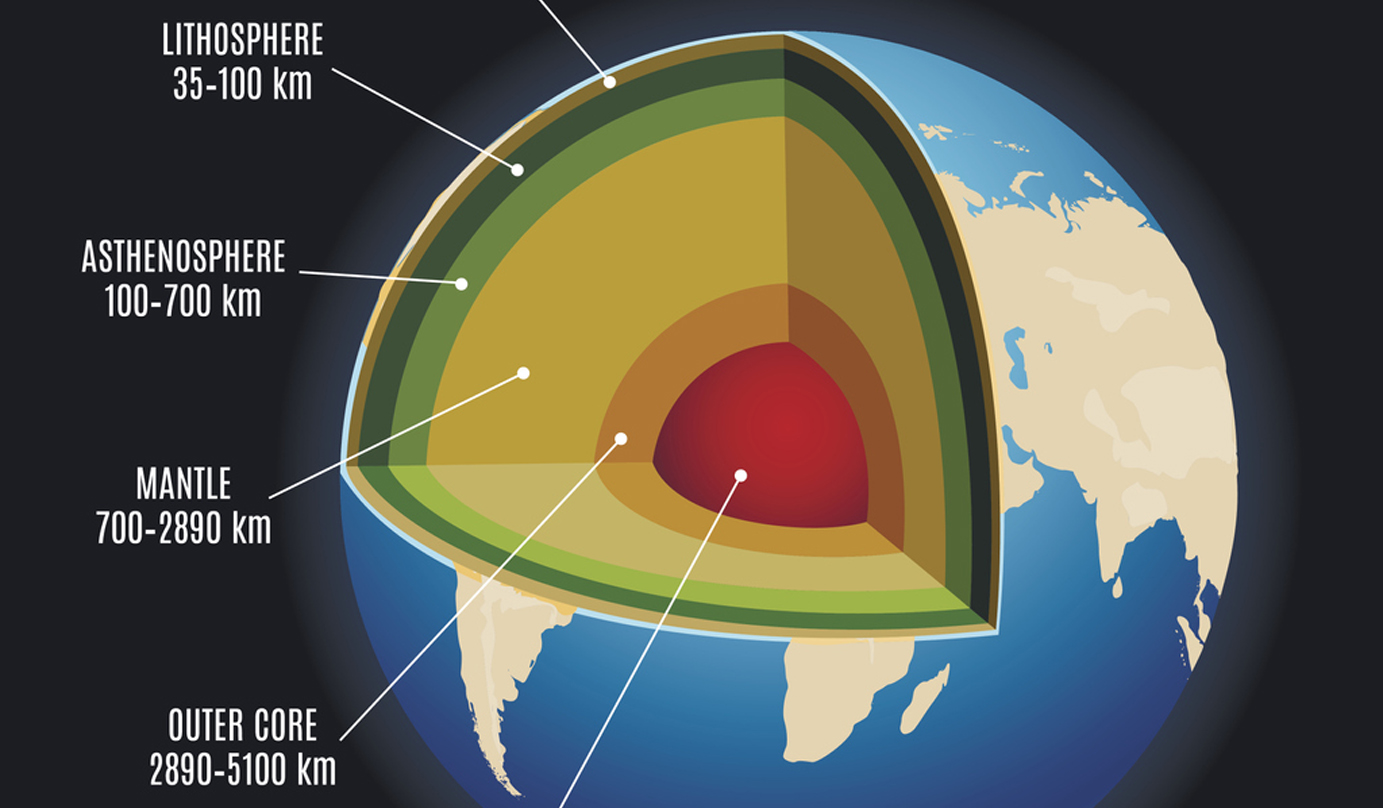
To get to the center of the Earth, you would need to dig through 6,378km of rock and other material. As you make your way to the center, temperatures would get increasingly hotter, hot enough to melt rock, reaching a high of more than 6,700°C at the core. This means it is impossible to venture deep into Earth's core. Since we cannot travel to the innards of Earth, learning about it is difficult.

Earth is big! It seems unlikely that we would ever be able to make our way to the centermost part of the Earth. Currently, the world's deepest mine, the TauTona Mine in South Africa, sits a mere 3.9km beneath the surface of Earth. Already, the temperatures at this point reach an unbearable average of 55°C.

To understand what lies beneath our feet, we have to take a look at Earth's layers. These layers help geologists learn more about our planet. Based on rheology, Earth is subdivided into the crust, mantle, outer core, and inner core. The crust is where we live. It is the thinnest layer. Our crust is made up of different plates which move over the asthenosphere. The asthenosphere lubricates the lithosphere, which allows for its movement across Earth.

Some scientists think that there is a 6th ocean in the mantle. This idea first appeared when a diamond was found in Brazil. This diamond came from inside Earth and was pushed up through volcanic activity. Another mineral was found in the diamond, and it has the tendency to absorb water surrounding it. This suggests that there is a lot of water where the diamond was located.

The Puerto Princesa Underground River in the Philippines is truly a natural marvel. The river winds through a beautiful cave before flowing out into the South China Sea. In 2010, it was discovered that there are small waterfalls inside the cave. It is one of the longest underground rivers in the world. The deeper areas of it are near impossible to explore because of the oxygen deprivation.

It would be hard to talk about underground wonders without at least mentioning volcanoes. A volcano is a rupture in the surface of the Earth, which allows magma to escape from below. Since the dawn of recorded history, over 600 volcanoes have erupted, and 50-70 volcanoes are considered active each year. According to statistics, at any given time, there are about twenty volcanoes erupting!

Eruptions are not always dramatic and devastating. An eruption is simply an expulsion of heat, ash and lava. Some eruptions are minor. Others are deadly. A volcanic island in Indonesia, erupted in 1883. It is considered to be one of the most violent volcanic events in history. The eruption was so loud that it could be heard from Perth, Australia, about 3,110km away. Another more minor eruption in 1927 caused a second volcano called Anak Krakatau, meaning 'Child of Krakatau', to rise from the sea.

Seismologists and other scientists have discovered two huge blobs under Earth's crust. These blobs are believed to be composed of a super-hot material. They were able to detect this anomaly by using seismometers, which act like an x-ray for Earth. The scientists were able to differentiate the blobs from the mantle due to a number of factors. First, the blob is at a different temperature than its surroundings. The blobs are also denser and more stable. It was also discovered that these blobs are situated below volcanoes. Some people believe the blobs are feeding volcanoes.

This leads to the question of where did the blobs come from? Maybe the blobs are remnants from when Earth was forming. Or it could be that the blobs were part of a primordial layer that has since been eroded. Or perhaps the heat from inside of Earth is able to slowly cook the mantle, which eventually forms these blobs.

Scientists have been using data collected from different seismometers around the world to add to their growing subterranean knowledge. A team from Princeton University was able to map the inner Earth by using supercomputers. With more information being gathered, scientists are able to learn more and more about the prodigious world beneath us.